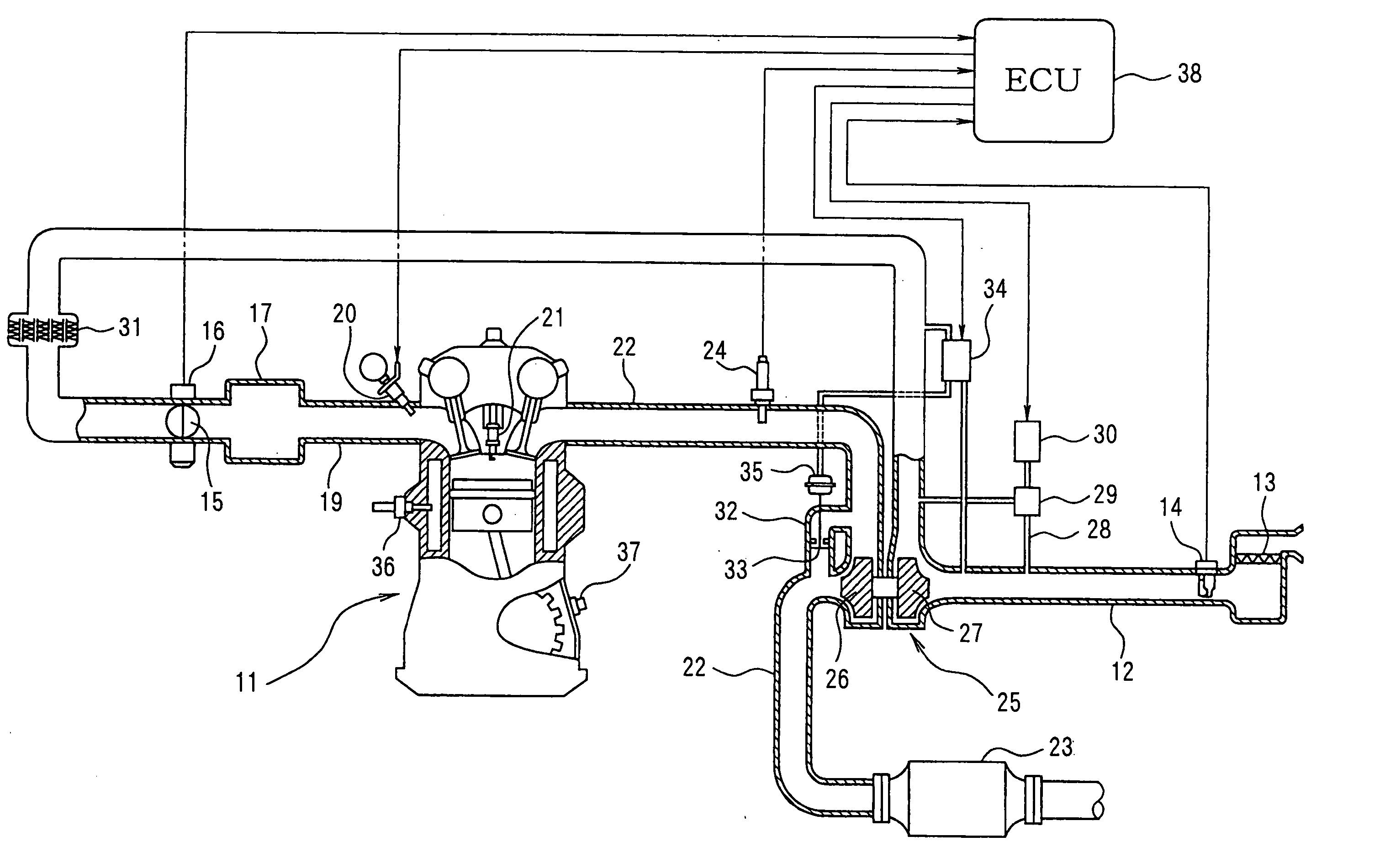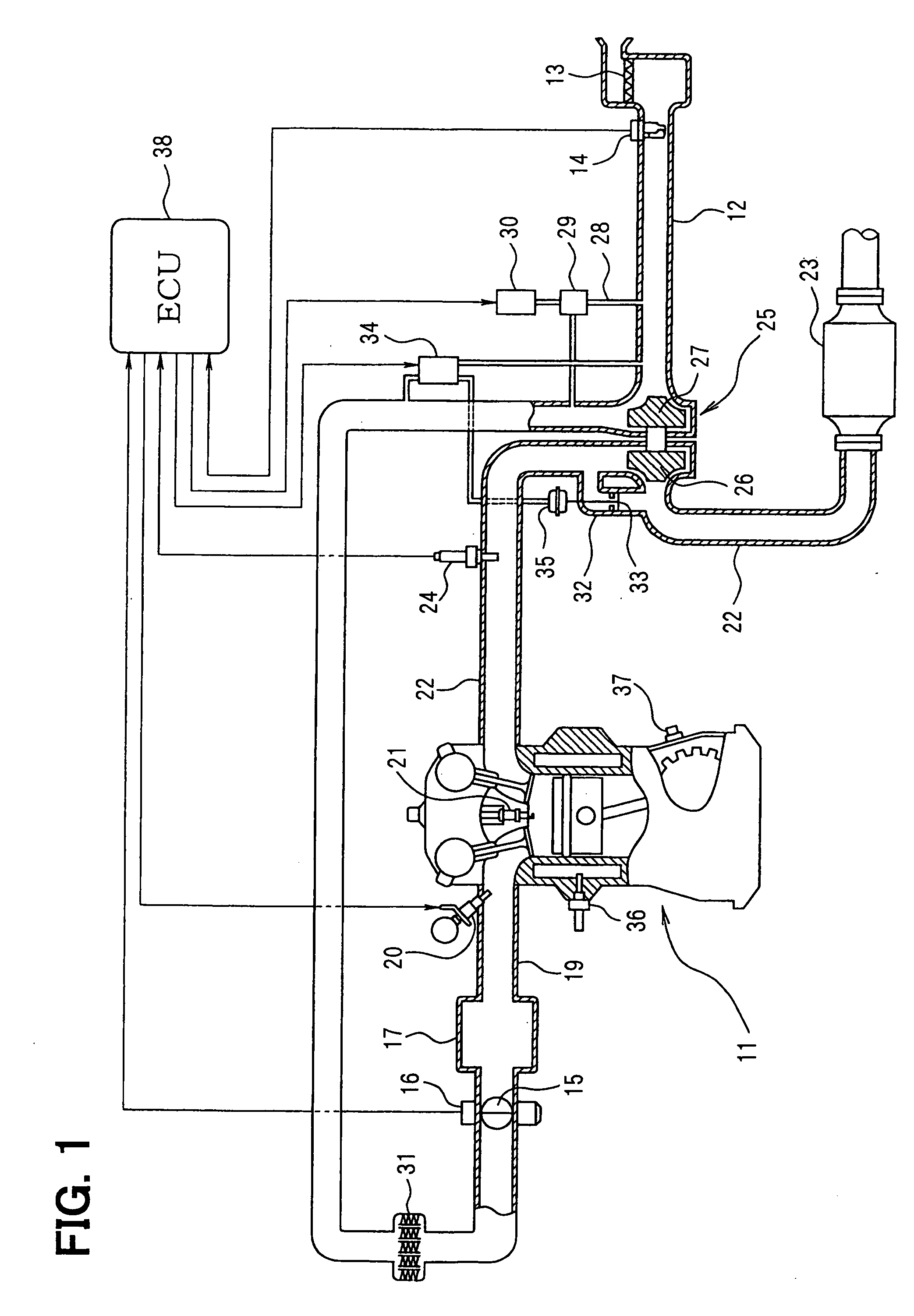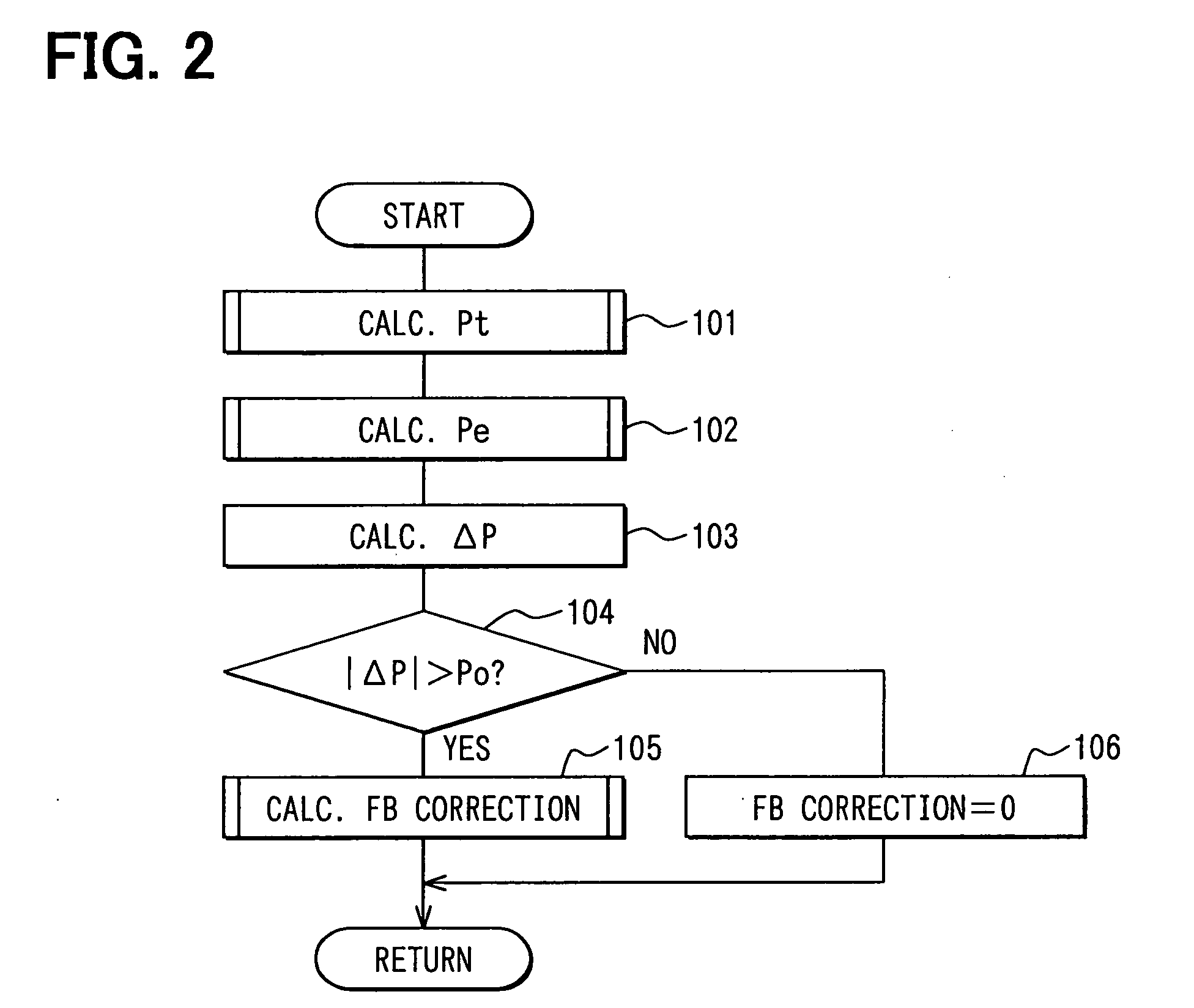Boost pressure estimation apparatus for internal combustion engine with supercharger
a technology of internal combustion engine and supercharger, which is applied in the direction of combustion engine, electric control, machines/engines, etc., can solve the problems of reducing the accuracy of detection, affecting the accuracy of boost pressure estimation, etc., to achieve accurate estimation, accurate calculation, accurate estimation
- Summary
- Abstract
- Description
- Claims
- Application Information
AI Technical Summary
Benefits of technology
Problems solved by technology
Method used
Image
Examples
embodiment 1
[0034] Embodiment 1 of the present invention is described with reference to FIGS. 1 through 7.
[0035] An overall construction of the engine control system is described with reference to FIG. 1. An air cleaner 13 is provided at the highest upstream of an intake pipe 12 (intake pipe) of an engine 11 as an internal combustion engine. The downstream of the air cleaner is provided an air flow meter 14 (means for detecting intake air amount) that detects the amount of intake air. The downstream of the air flow meter 14 is provided with a throttle valve 15 and a throttle opening sensor 16. A DC motor or the like is used to adjust the opening of the throttle valve 15. The throttle opening sensor 16 detects the throttle opening.
[0036] Further, a surge tank 17 is provided at the downstream of the throttle valve 15. The surge tank 17 is provided with an intake manifold 19 that introduces air into each cylinder of the engine 11. A fuel injection valve 20 to inject fuel is attached near an inta...
embodiment 2
[0061] Embodiment 2 of the present invention will be described with reference to FIGS. 8 through 17.
[0062] As shown in FIGS. 16A and 16B, the intake air amount Ai (exhaust gas amount) of the engine 11 suddenly changes during transient states such as acceleration and deceleration. Compared to a change in the turbine-supplied gas amount Gt, a change in the exhaust turbine's rotational speed is subject to a delay due to inertia of the exhaust turbine 26. Accordingly, a delay occurs in a change in the boost pressure compared to a change in the turbine-supplied gas amount Gt.
[0063] As shown in FIG. 17A, the boost pressure rises during deceleration from the supercharging state. To prevent this, the ABV 29 is opened to decrease the boost pressure during the deceleration.
[0064] Further, as shown in FIG. 17B, there may be a difference between the exhaust turbine's rotational speed and the boost pressure when the ABV 29 is opened and closed.
[0065] In addition, an IC pressure loss (an inta...
embodiment 3
[0092] The following describes embodiment 3 of the present invention with reference to FIGS. 18 and 19.
[0093] As shown in FIG. 18, embodiment 3 provides two exhaust pipes 39 (exhaust pipes) corresponding to two cylinder groups. An air-fuel ratio sensor 24 is provided for the exhaust pipe 39 in each cylinder group. Corresponding to the two exhaust pipes 39, two exhaust turbine superchargers 25 are mounted on the engine 11. Each supercharger 25 is provided with the exhaust turbine 26 in each of the two exhaust pipes 39. A branch intake pipe 40 (intake pipe) branches into two portions between the air flow meter 14 and the throttle valve 15 in the intake pipe 12. Each branch intake pipe 40 is provided with the compressor 27. The exhaust bypass pipe 32 is provided for each of the two exhaust pipes 39. Each exhaust bypass pipe 32 is provided with the WGV 33 and an actuator 35. The common VSV 34 for WGV controls the WGVs 33 and the actuators 35. The remainder of the system construction is...
PUM
 Login to View More
Login to View More Abstract
Description
Claims
Application Information
 Login to View More
Login to View More - R&D
- Intellectual Property
- Life Sciences
- Materials
- Tech Scout
- Unparalleled Data Quality
- Higher Quality Content
- 60% Fewer Hallucinations
Browse by: Latest US Patents, China's latest patents, Technical Efficacy Thesaurus, Application Domain, Technology Topic, Popular Technical Reports.
© 2025 PatSnap. All rights reserved.Legal|Privacy policy|Modern Slavery Act Transparency Statement|Sitemap|About US| Contact US: help@patsnap.com



